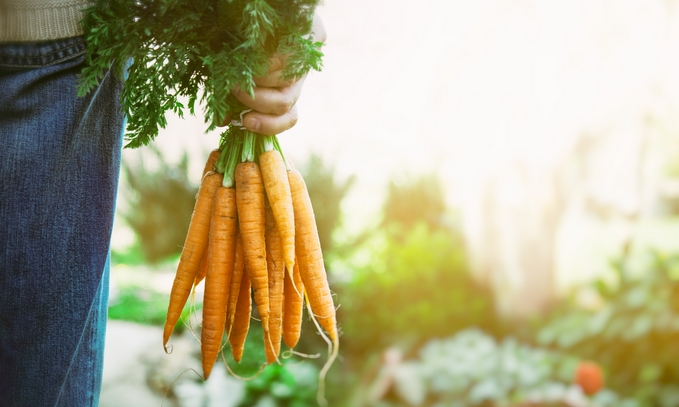I am not taking sides on the debate whether commercial organic production is sustainable. The purpose of this discussion is to simply state some facts that hopefully cause the reader to really think about and learn before drawing any conclusions. You must decide or decide not to decide. Sometimes I come to the realization that I don’t know what I don’t know. In this case, however I think I’m a little like Forrest Gump; “Maybe it’s both.”
I’ll leave the definition of “Organic” up to you. There are dozens. “Sustainability” is however succinctly defined by Dr. Ikerd at the University of Missouri as: “An agriculture that uses up or degrades its natural resource base, or pollutes the natural environment, eventually will lose its ability to produce…a sustainable agriculture must be all three – ecologically sound, economically viable and socially responsible. And the three must be in harmony.” The three key words are ecological, economical and responsible.
I think it’s safe to say the general public is convinced organic farming is more sustainable, and conventional agriculture is not. In fact, the World Watch Institute says organic farming “has the potential to contribute to sustainable food security by improving nutrition intake and sustaining livelihoods in rural areas while simultaneously reducing vulnerability to climate change and enhancing biodiversity.”
Following is some evidence to consider before drinking the Kool-Aid:
1) The Ben Gurion University in Israel recently published a study analyzing nitrate leachate concentrations in groundwater in conventional farming versus organic (compost fertilized) production systems. Nitrate concentration profiles beneath the organic production area averaged 724 mg. per liter; under the conventional it was 38 mg. per liter. EPA says safe drinking water should have a maximum of 10 mg per liter. I’m not drawing any conclusions, but ecologically speaking, elevated nitrate levels in ground water are not indicators of sustainability.
2) A study published in the “Proceedings of National Academy of Sciences” concludes organic farming methods lead to increased carbon sequestration or adding carbon to the soil. This is a great thing! However, these methods were discovered and perfected 75 years ago. Today there are much more sustainable ways to add carbon to the soil and avoid creating a monstrous carbon footprint. Composted manure and other organic materials generate methane, nitrous oxide and carbon dioxide. Unfortunately, methane is 21 times and nitrous oxide 295 times as much greenhouse effect gas as carbon dioxide. Conventional methods of cover cropping and no till systems are more sustainable.
3) Currently organic farming yields 20-50% less than conventional methods. Think about this for a moment. If organic methods were implemented:
- Up to twice as much land would have to be converted, i.e. deforestation, to farm land.
- Up to twice as much water would be consumed as a result of increased acreage. Given the drought across the western U.S. and aquifer deficits, this may not be considered a water conservation strategy.
This would certainly not be considered a move towards increased sustainability. A study in the British Journal of Environmental Management found ammonia emissions, nitrate leaching and nitrous oxide emissions were higher utilizing organic production methods than conventional farming systems, as were “land use, eutrophication potential and acidification potential.”
1. Scalable organic production requires mechanical weed control or tillage. Tillage is also required to incorporate organic fertilizers or composts and manure into the soil. However, the best approach to improving soil quality, increasing carbon levels or organic matter is what conventional agriculture calls no-till or minimum-till. These systems are not possible under an organic regime. As a result, the potential for erosion, leaching, run-off, volatilization and environmental degradation is apparent.
2. The reason I hesitate to define “Organic” is in today’s mainstream media and academia it is a bit Orwellian and Double-Speak. Let me give you two examples of “Organic” insecticides:
- Rotenone – while it is plant derived, it is extremely toxic to fish and is commercially used as a fish killer or a pisicide.
- Nicotine Sulfate – is extremely toxic to warm-blooded animals and causes birth defects. Also, it’s been a while since my college inorganic chemistry class, but I believe sulfates are salts and very inorganic.
A couple other facts that may urge you to at least question the norm:
- A study in the journal “Tree Physiology” recently published shows native Red Oaks in New York City grew 8-10 times faster than the same trees in the Hudson Valley. It’s hot in the city!
- Scientists at the Smithsonian have shown trees along the Eastern Seaboard are growing faster as a direct result of increased carbon dioxide levels. More carbon dioxide, more food? Just asking…
- Carbon dioxide levels today are 400ppm in the atmosphere. 400 million years ago they were 4000ppm. You would assume based upon what you’ve been told that global warming, sea levels, temperatures would have been rising off the charts. The problem is there was no global warming 400 million years ago. There was glaciation occurring. I’m just saying…
In conclusion, I simply ask you to revisit the assumptions you may have made about organic farming, organic fertilizers, global warming, greenhouse gas emissions, and agendas certain corporate and political interests may have. Everyone has an agenda that is driven by control, power and the want of money. Please ask the questions. Please do the research. Please draw your own conclusions. 2+2 still equals 4 but I’m not sure for how much longer. Just ‘cause they say doesn’t make it so, unless they’re Hitler, or they say it enough times. I don’t know. I don’t have the answers. Do the heavy lifting yourself and think!
“And that’s all I have to say about that.”
Take care,
Tom


